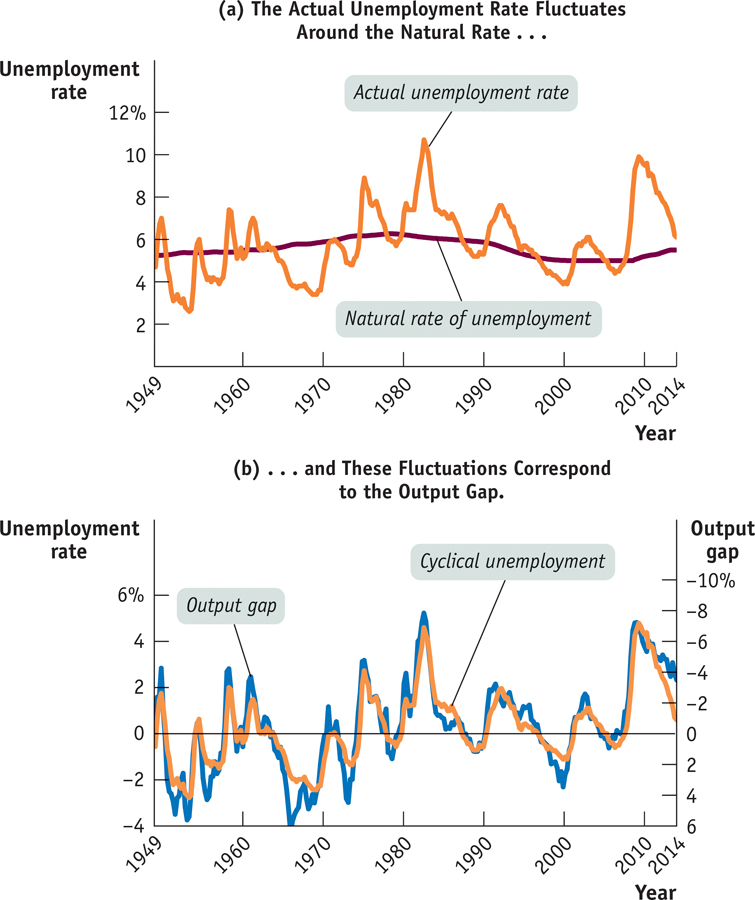31-4
Cyclical Unemployment and the Output Gap

Cyclical Unemployment and the Output Gap Panel (a) shows the actual U.S. unemployment rate from 1949 through 2014, together with the Congressional Budget Office estimate of the natural rate of unemployment. The actual rate fluctuates around the natural rate, often for extended periods. Panel (b) shows cyclical unemployment— the difference between the actual unemployment rate and the natural rate of unemployment— and the output gap, also estimated by the CBO. The unemployment rate is measured on the left vertical axis, and the output gap is measured with an inverted scale on the right vertical axis. With an inverted scale, it moves in the same direction as the unemployment rate: when the output gap is positive, the actual unemployment rate is below its natural rate; when the output gap is negative, the actual unemployment rate is above its natural rate. The two series track one another closely, showing the strong relationship between the output gap and cyclical unemployment.Sources: Federal Reserve Bank of St. Louis; Congressional Budget Office.